Choice Words
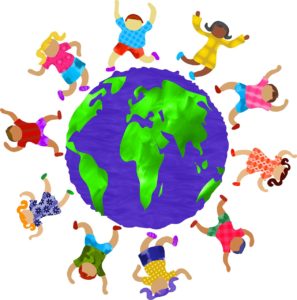
Walking the Walk: Creating Meaningful Ways to Teach Multiculturalism at Home
Songs, Books, Tips (and a coupon!)
to support 3 best practices
“I can see myself in all things and all people around me.”
~Sanskrit
I am fortunate to have had many life-expanding global experiences since my early days growing up in a small Midwestern town (which included exactly two Black families and no other races or cultures represented). It “took a village” to bring me to my current understanding; all the teachers, neighbors, friends, colleagues, relatives, travel, and remaining open to new experiences have afforded me a much broader and richer set of life experiences and understanding.
I have made countless efforts to be sure that my child has had opportunities to see the world through engagements with many people of various races, beliefs, and cultures. But these experiences are not limited to world travel. “Walking the walk” – making sure that our intentions to include other cultures in our kids’ lives are matched through our words and actions – includes creating a variety of opportunities to experience life beyond ones’ own backyard.
While many people in the US may not be travelers, the rest of the world is coming to us. As of 2015, Latinos* comprise nearly 18% of the US population, Blacks* make up about 13%, 6% are Asian*, 1% are American Native*, and Whites* make up the balance (around 62%) which is steadily decreasing each year. It has never been more important for our children to develop a strong sense of self, self-esteem, and respect for themselves and their heritage while developing the same respect for those who differ. Our neighborhoods and communities are quickly reflecting dynamic changes as people from around the globe join our country, bringing with them differing values, customs, music, food, languages, music, traditions, literature and ways of life.
“It is time for parents to teach young people early on
that in diversity there is beauty and there is strength.”
~ Maya Angelou

How can we best ensure an inclusive, respectful multicultural environment for our children? Consider these three best practices for instilling a global view in your home:
1. Learn what you don’t know.
Be open to discovering your own misinformation.
Embrace your child’s naivety and curiosity and do the research–beginning with the cultures represented in your own family, neighborhood and school.
?Follow your family tree to understand your own racial and cultural heritage.
? Online programs can help you with genealogy (FamilySearch.org and AfriGeneas.com are both free and provide important records). DNA tests can now provide specific information regarding your ethnic makeup as well (like 23andme.com/DNA-ancestry or Ancestry.com).
? Explore your family’s heritage through books, movies, music, food, trips to relevant locations, historical museums, online resources, etc.
? Volunteer to visit your child’s class to share something of your culture (i.e., food, dress, music, craft, storytelling, books) throughout the year.
? Read local papers for information about events, import shops, ethnic markets, book talks and festivals related to relevant culture/s and attend them. Take pictures and ask questions!
? Visit museums; they are a treasure-trove of cultural artifacts and experiences.
? Become familiar with the beliefs, values, customs, foods, traditions (customs used on specific occasions) and holidays of relevant cultures from your neighborhood, school or community.
? Incorporate what you learn into daily experiences.
? Encourage dialogue about cultural similarities and differences.
? A Life Like Mine by DK (Dorling-Kindersley publishers)
? “Family Photo Album” from Family Album by Two of a Kind 
Was Barack Obama
a President…

or a Black President?
2. Cultivate an attitude of acceptance and respect for different cultures through everyday conversation. Be aware of your own discomfort.
As a parent, your attitude and actions toward differing races* or cultures* is what children will learn and imitate–even when your words are contrary to your actions! Multiculturalism is more than eating “Stir Fry” or having a pinata at a birthday party. It is about paying close attention to our own biases and misinformation (we all have them!), educating ourselves about cultural differences, and engaging actively in conversations and activities with the intent to encourage exploration and inclusion beyond “tolerance,” and toward genuine appreciation for our differences.
This includes comparing and contrasting similarities and differences without judgment. Racial and cultural biases have been identified in children as young as age three. Even without discussing race, children naturally create categories–divisions–for themselves; it is part of the learning process to mentally put “like things together.” When it comes to social behavior, they create their own “us and them” mentality and they presume: “Those who look like me share my same interests and are OK; those who do not look like me do not share my interests and are less OK.” What constitutes similarity does not necessarily depend on race, but on any perceived likeness such as shirt color, choice of activities, food preferences, etc. And where other options don’t make sense to the child, they typically default to race (Bronson & Merryman, 2009).
By helping children associate neutral or positive descriptors with racial differences, parents can help create a more positive attitude about all kinds of differences. By the time children are nine years old, their self-identity and perception of others who differ from them are already solidified. It is never too early to broaden a mind!
“We need to help students and parents cherish and preserve
the ethnic and cultural diversity that
nourishes and strengthens this community – and this nation.”
~ Cesar Chavez
But discussing issues of race and ethnicity can be muddled for some parents and unnerving for others. How young is too young to discuss such topics? What, exactly, should we say? Should we say anything at all? What if we say the “wrong” thing? What would that be?
There are at least three schools of thought on highlighting racial differences: One is that it is important to highlight racial differences with young children because those differences are already obvious (skin color is noticed as early as 6 months of age according to Katz in Bronson & Merryman, 2009), and you can highlight those differences without judgement (“Yes, her skin is darker than yours.”), or by incorporating your observation with a positive statement like, “President Obama is our nation’s first Black President. Anyone, regardless of skin color, can become whatever they want to be.” (Technically he is our first known biracial president!)
Another school of thought is that in highlighting racial differences you are inadvertently creating a division where one would not otherwise exist. White parents tend to avoid highlighting racial differences more than parents of other races. Unfortunately, this often sends a confusing message to children, implying that there is either something wrong with a person of another race or that there is something wrong with asking questions about race. A study of parents of 17,000 kindergartners indicates that 75% of White parents of kindergartners “rarely or never” discuss race with their children (three times more likely for non-White parents). And yet ALL children have natural curiosity! Imagine all the unanswered questions they must have–or worse yet, the sense of “taboo” children develop toward the topic.
A third framework is called “Diverse Environment” (the principle behind early school desegregation) and suggests that the environment itself is the positive message of diversity. If you raise your child in a home, school or community that is diverse and open to diversity, children will internalize by osmosis the concept that varying races working, learning and living together are acceptable. While this is a strong start, it is never enough. Repeated research shows that even in a diverse school or neighborhood students tend to interact primarily with their own race.
What we know from leaders in education and psychology is that explicit conversations of race and ethnicity work, and they matter at a very young age. Some researchers believe that there is a developmental “window” during which children are most likely to develop their sense of self, identity, racial and ethnic similarities and differences, after which they no longer absorb or incorporate much new information. So while it is vital to provide a “diverse environment”–the conversations, questions and frank answers all play a crucial role in your child’s developing sense of his place in a global society.
? Invest in Multicultural (skin-tone) crayons. It is important for children to recognize their own identity as well as that of others and be able to accurately reflect themselves in their artwork.
? Incorporate foods and snacks from other cultures on a regular basis. Be sure to give them context by discussing what the food is, how it is made, and why its ingredients may be of importance (i.e., root vegetables grow easily in that country; salt has a special significance, etc.).
? Children Just Like Me by DK (Dorling-Kindersley publishers)
? Kids’ Multicultural Cook Book by Deanna F Cook
? Global Art by Mary Ann Kohl
? “Assam Aleykum” (a song of peace) by DARIA 
? Be sure that books and other print material in your home (particularly children’s books) reflect a variety of ethnicities and cultures, particularly those that reflect your own makeup and that of your child’s neighbors and classmates.
? Focus on the commonalities you find between people of your own culture and those from others. Remember to remark upon differences with interest and intrigue, or at least neutrality; avoid labeling or using a negative or mocking tone that might undermine the value of others’ unique experiences: “Yes, many women of the Muslim faith cover their heads with a special scarf called a hijab.”
? Learn significant words and phrases (I love you, please, thank you, etc.) in the language of relevant culture/s. There are free apps for PC, Mac, and cell users like iTranslate, Google Translate, or TripLingo.
? If you don’t know an answer to your child’s question, be honest. Say you don’t know, but then involve them in discovering the answer: search online together, ask others, read books to find out. Including your child in finding answers helps him learn to be resourceful, inquisitive, and fact-finding! If that’s not possible, always find the answer and share it with your child. If you later discover that you were mistaken, be sure to let your child know the correct information; it helps your child to see that adults also continue to learn and discover new things!
? Encourage cross-cultural friendships through play dates and shared experiences.
? Whoever You Are by Mem Fox
? If You Lived Here: Houses of the World by Giles Laroche
? It’s OK to Be Different by Todd Parr
? ”Take Good Care of Each Other” by Cathy Fink & Marcy Marxer 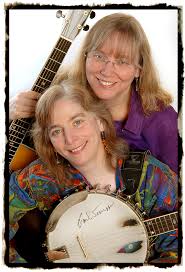
? “Every Little Bit of You” from Come Make a Circle 3 by Susan Salidor 
“Diversity: the art of thinking independently together.”
— Malcolm Forbes
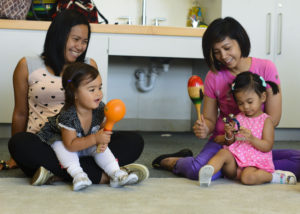
3. Infuse your choices, responses and activities with a multicultural perspective.
Always model the type of attitude, words and behavior you wish to see in your children!
Through knowledge-gathering and integration of global content into your home and activities you will create a supportive, inclusive environment for your child.
? Engaging your children in learning about their own heritage, values, customs and traditions not only builds their self-esteem and cultural pride, but it enhances the way they view and embrace the cultural differences in others. The younger they are when they begin to develop their curiosity and acceptance the better able they will be to live and succeed in our ever-changing world.
? Focus on a “strengths and gifts” perspective when discussing your child’s abilities, beliefs and contributions to his world. Identify strengths and gifts in others in your child’s circle. There are many qualities to observe and celebrate in others, regardless of race or culture, that are typically embraced by all:

compassion,
loyalty,
friendship,
hon esty,
esty,
integrity,
helping others,
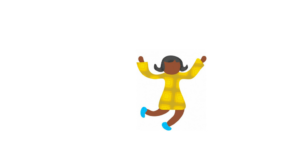 kindness,
kindness,
patience,
hard work,
 doing your best, etc.
doing your best, etc.
Explicitly acknowledging and honoring those qualities you value that you see in your child and others goes a long way toward developing self-esteem, self-acceptance, appreciation and acceptance of others. Through intentional language and active conversation about similarities and differences, you help your child see herself as the special, unique person she is–while seeing the same uniqueness and gifts in others, too!
| ? Kids Songs Around the World: A Mama Lisa book by Lisa Yanucci
? “Part of One Family” from Pizza Pizzazz by Peter & Ellen Allard |
| ? A Ticket Around the World by Natalia Diaz & Melissa Owens |
? “Family Tree” by Tom Chapin & John Forster performed by Two of a Kind on their album Friends 
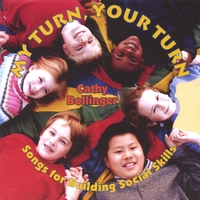 ?”Everyone Has Strengths to be Proud Of”
?”Everyone Has Strengths to be Proud Of”
from My Turn, Your Turn by Cathy Bollinger
Photo credits:
All cover art provided by the artists. Book covers obtained from booksellers as linked.
http://www.aviano.af.mil/News/Photos/igphoto/2001258671/
Resources:
? Bronson & Merryman, 2009: http://www.newsweek.com/even-babies-discriminate-nurtureshock-excerpt-79233
? 2015 US Racial Demographic statistics: http://kaiserf.am/2vgzQg8
? Additional suggested children’s books:
Kids’ Multicultural Craft Book by Roberta Gould
International Cookbook for Kids by Matthew Locricchio
Celebrations by Anabel Kindersley
? A sampling of multicultural songs & albums
available from Little Songbird: Songs for Learning
Multiple languages:
Celebrate the Seasons (holiday songs in German, Spanish, Ladino, English) by DARIA 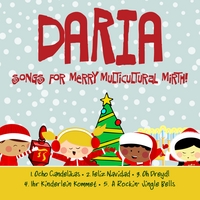
Beautiful Rainbow World by DARIA 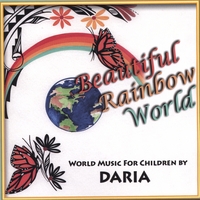
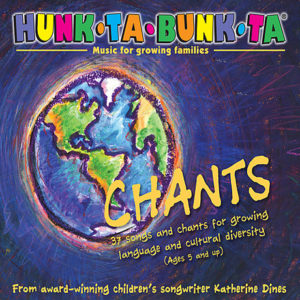 Hunk-Ta-Bunk-Ta: Chants from Around the World by Katherine Dines
Hunk-Ta-Bunk-Ta: Chants from Around the World by Katherine Dines
Latin America/Spanish
“Paz Y Libertad” by Jose Luis Orozco performed by Two of a Kind on Sing Me Your Story 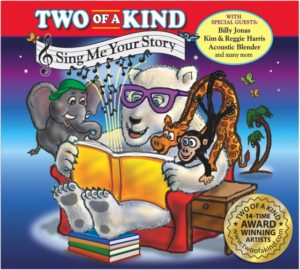
Africa
African-American
“Rock-a My Soul” (Spiritual) from Make It a Song, Song, Song by Liz Buchanan
Jewish/Hebrew
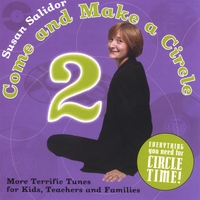 “Shalom Chaverim” from Come and Make a Circle 2 by Susan Salidor
“Shalom Chaverim” from Come and Make a Circle 2 by Susan Salidor
https://littlesongbird.com/shop/family/shalom-chaverim/
Shanah Tovah, Shanah M’Tukah: Songs for the Jewish Year by Joanie Calem 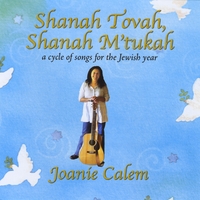
French
Qu’il y ait toujours le soleil by Charlotte Diamond
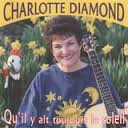
About the Author
Lisa Heintz is an elementary educator and edupreneur. Her site, Little Songbird: Songs for Learning (LSS4L), currently provides nearly 1,000 song and album downloads of quality children’s music from a variety of independent artists. LSS4L is excited to be adding more music, book recommendations, and lesson plans/activities to accompany the songs on the site to make integrating music into daily life and curriculum a 1-stop shopping experience! Visit us at www.LittleSongbird.com
Do you know of children’s song recordings in languages other than English that we should consider for our site? Let us know: Lisa@LitttleSongbird.com.
*While terminology relating to culture, ethnicity and race can often be complex, blurry or sometimes inaccurately used, for the sake of this post “race” suggests a group of people who share common physical features and genetic background. “Ethnicity” suggests a social group of people who share a common nationality, language or cultural traditions. “Culture” refers to the rituals, arts and beliefs that identify a group and are passed down through generations.
“Black,” “White,” “Latino,” “Asian,” and “American Native” refer to American residents who self-identify as such, but are broadly used to differentiate race in the simplest visual terms. For more on ethnicity and race definitions: http://www.diffen.com/difference/Ethnicity_vs_Race
NOTE: This article was previously posted 9/18/17 as a guest blog on Globe Trottin’ Kids.
Are We There Yet? Diversity in Picture Books
These two (rather fuzzy) graphics recently came to my attention and I was immediately intrigued by the topic. It was pleasing to see the shift in the number of Caucasians represented in children’s picture books in the latest survey (down about 20%!). At first glance, this seems like a tremendous change in the characterization and illustration of children’s book characters, presumably intended to better represent our diverse nation.
According to the most recent US Census (2010), of those who identify themselves with a single race, Caucasians represent approximately 64% of the nation’s population, followed by 16% Hispanic/Latino*, 12% Black/African-American, 5% Asian, and .7% Indigenous (Native American/Alaskan Native).
If you see the graphics clearly enough you might notice one striking difference besides the numbers: The 2015 Infographic includes an additional category: “12.5% Animals and Trucks.” What?!
It turns out that of all the children’s books published per year, about 1/4 of them are Picture Books (which, by definition, means that the illustrations are as important–if not more–to conveying the story as the words). Of that 25%, half contain non-human characters–rabbits, elephants, chickens, dump trucks, trains, etc. Thus, 12.5% of all picture books do not contain human characters to begin with. As that fact is not reflected in the original 2012 graphic, it can be a bit misleading.
So what does this mean? Well, in may mean that although the use of Caucasian characters is down by 20% the use of non-human characters may actually be on the rise! I have no proof of that, but it is a real possibility that the graphic doesn’t clarify. Regardless, I am heartened by this information. To me it indicates that people–publishers, parents, children, teachers and other “stakeholders” are starting to pay attention to the disporportionate amount of Caucasian representation in children’s picture books. It indicates that stakeholders are seeking more opportunities for diversity in children’s everyday lives–at home and at school. And it means that publishers will ultimately strive to do a better job of reflecting our culture in its many, varied forms.
Change is always challenging, and it rarely floods in–it tends to trickle slowly, both internally and externally. Old habits die hard for most of us. It may seem disingenuous for a teacher to modify his/her book collection with the intent of representing more diversity; most may think it should just be an organic process. But I challenge that notion, because if we wait for that to occur organically it may be years before our bookshelves actually reflect the diversity that is no doubt present in most classrooms.
Complacency with the status quo in this situation is not a good thing; people who purchase books for children need to continue to insist on reflecting the times in which stories are published. But there is hope in the books I see coming out today. Different worlds, different people, different dreams are being modeled through the pages of the all-important picture book–and being fulfilled by the readers who embrace them.
What steps have you taken to increase the diversity of your book collection?
This notion applies to music, too! We live in a world RICH with music from all nations and genres, so why not blend in the music of your students’ heritage as well? On LSS4L you’ll find a growing collection of songs in Hebrew, French and Spanish! Even a different genre is a nice place to begin–if you provide a steady diet of contrived songs (created specifically for teaching a skill), how about some fun songs for movement? Songs with a message of hope, friendship or silliness? If you always use children’s music in the classroom, why not branch out and try some kid-friendly classical or country music?
Trying a different music genre is also a nice place to begin. If you provide a steady diet of contrived songs (created specifically for teaching a skill), how about some new songs for movement? Songs with a message of hope, ecology, friendship or silliness? If you always use children’s music in the classroom, why not branch out and try some kid-friendly classical or country, or pop music? “Happy” by Pharrel Williams, “Firework” by Katy Perry, “Grandma’s Feather Bed” by John Denver, or an old country-folk song like “All Around the Kitchen.”
If you want to dip your toe in the Classical pond, see these good suggestions from Let’s Play Music: http://www.letsplaykidsmusic.com/14-best-classical-music-tracks-for-kids/
Your efforts do not have to be huge nor perfect–but your children (at home and at school) will appreciate the variety as well as the message you model: Diversity in all its forms is the spice that makes life delicious!
*Diversity moment: “Hispanic” refers to LANGUAGE — people who speak Spanish. This excludes Brazilians because they speak Portuguese. “Latino” refers to a GEOGRAPHIC region — all people of Latin American origin which includes Brazil, the Caribbean, South America and Central America but NOT Spain (where Spanish is the main language). These categories were established by the US Government in the 1970s as a means of differentiating immigrants and descendants. While many Americans use the terms interchangeably, that is technically inaccurate and can be offensive to some. To avoid any further racial misnomers I would liken it to being a female–some women don’t mind being referred to (in a group setting), as “guys,” while other women might find that offensive and prefer “Ladies” or even “Girls”. The same can be said for expressions like Miss, Ms. or Mrs. which are intended to identify your age and marital status. Some women find the terms relatively harmless and exchangeable while others are put-off by the wrong (or any!) moniker. It is important to know the preferences of those in your own life and speak accordingly. For the purpose of this writing, however, we will stick to the standard categories used by the Census Bureau.
Five Minutes That Matter
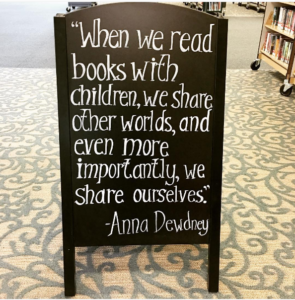 Last week we lost to cancer the marvelous, talented and warm-hearted children’s author, Anna Dewdney. By the time of her passing, she had authored over 20 books in the Llama Llama Red Pajama series that related so well to the actions and feelings of children ages 2-5 that parents knew before opening the book that they would find their little one–and probably themselves–in the storyline.
Last week we lost to cancer the marvelous, talented and warm-hearted children’s author, Anna Dewdney. By the time of her passing, she had authored over 20 books in the Llama Llama Red Pajama series that related so well to the actions and feelings of children ages 2-5 that parents knew before opening the book that they would find their little one–and probably themselves–in the storyline.
Anna was a passionate advocate for literacy, frequently writing articles extolling the emotional and academic importance of reading to and with children in order to develop a lifelong love of learning, reading and success. She knew, as teachers do, that even a little bit of time adults invest in reading with kids expands their horizons, builds literacy skills, and creates a positive bonding experience. That positive emotion surrounding the act of reading has a ripple effect on all else in a child’s world. (Likewise, not reading has a negative ripple effect!).
The effect is the same for singing with your kids! Through song, we bond emotionally, we play, we learn, we create, we expand our horizons. We even model the same inflection, phrasing, word choice, characterization and emotion that we convey when we read!
Anna Dewdney’s last wish was simple: No accolades, no donations, no big funeral–she just wanted everyone to take the time to READ TO A CHILD. (more…)
Why I need Hicklebees Indie Bookstore–and so do you!
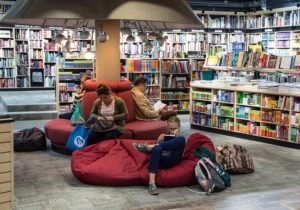
When I first started teaching (back in the 80s) there were very few children’s artists: Raffi, Sharon, Lois & Bram, Fred Penner, Charlotte Diamond, Ella Jenkins, Greg & Steve, Hap Palmer…that was about it in the field. Those artists were much beloved, much-played and well sold in local children’s and general bookstores. Because there were so few of them most children knew their music and had a “shared repertoire” of songs and teachers capitalized on that in early childhood classrooms.
By the early 90s my hometown of Cincinnati had become home to three unique “independent” bookstores—two intended for all audiences, and an actual children’s bookstore with the widest selection of children’s music I’d ever seen! It was like the Emerald City of children’s books and music and I was on my merry way to see all the amazing new artists (and authors) that were not to be found in Barnes & Noble–the stalwart, “one size fits all” box store. I actively pursued all the new artists’ music I could get my hands on between those stores and had no difficulty finding something new each visit!
And then, as if someone had flipped a switch, it all changed. Each new visit to a store resulted in scant choices–new or otherwise, increased “commercial” music, and finally, nothing at all could be found except a few Raffis and All Things Disney.
By this point in the internet evolution, buying CDs had also expanded, so all was not completely lost. However, the advent of Amazon also decried the end to paying retail price for much of anything–and suddenly all of the booksellers, big and small, could hear the deafening “whoooosh!” as customers left the bricks-and-mortar stores to buy what they wanted–when they wanted it–at cheaper prices online.
So if we (myself included) have so much to gain by shopping online–cheaper prices, comparison shopping at a click, shopping in our PJs in the middle of the night, and many times free shipping, why do we need bookstores at all?
Why Indie Bookstores?
*If you’ve ever gone shopping for a red blouse and discovered as you perused that you also liked a green one and a polka dot dress, you need indie booksellers. An actual store offers you the immediacy of touching, feeling, even smelling the products before you buy (not to mention that free sample of reading!).
*If you’ve ever gone to the grocery store to get three items and come out with ten, you need indie booksellers. Where else can you truly find more treasures than you went for?
*If you’ve ever gone to see your doctor and had to be seen by a different doctor who doesn’t know your medical history or personal quirks (you refuse to give up that one scoop of ice cream before bed no matter how much he begs), you need an indie bookseller who knows your interests and what is new that might intrigue you.
*If you’ve ever felt a sense of disappointment when you’ve gone to a box store and there was no one to assist you. In any aisle. Anywhere. You need an indie bookseller.
*If you’ve ever yearned for a local shop that was unique so you could find an unusual gift that didn’t look like every other person’s gift under the tree or next to the cake, you need an indie bookstore.
*If you teach with art and passion–beyond the “required” content–you need a bookseller that reflects your passion. Indie booksellers do not get into the business for money and riches any more than teachers do! They get into the field because they love what they do.
*If you believe, as I do (and research has proven), that children read best when they have options, you need a bookstore that provides those, too–music and books.
If you feel strongly that artists and authors of all genres for all ages deserve to be published, you need to support an independent bookseller who does, too. Without them, we would end up in a “Bestsellers Only” world! Do you read bestselling books or listen to award-winning artists? I do, but my interests vary far from that short list.
Why Hicklebees?
I discovered Hicklebees Children’s Book Store near San Jose, CA on a trip. They have an amazingly large, varied collection of books and music specifically designed, written, and selected with children in mind. Their staff is knowledgeable. They frequently host guest artists, authors and illustrators (as evidenced by their autograph-covered walls!). They recognize their customers and greet the newbies with friendly service. Actual service. I was taken on a “guided tour” by one of their staff members who was eager to show a newcomer all the wonders of their store that were not on the shelves–the autographs (even in the bathroom, there are so many!), their Hall of Fame curio cabinets full of book-related artifacts, their comfy reading spaces. And as I left with one HUMONGOUS bag of books and CDs I realized that it was not just the products that appealed to me–it was the ambiance, the other shoppers’ enthusiasm, and the staff’s eagerness to assist that made shopping there a pleasing experience that I enjoyed rather than an item to check off my To Do list.
That is why Little Songbird has created an Affiliate Program with Hicklebees. If you see a song you like that has suggested books next to it you will find that clicking on the book link takes you directly to Hicklebees store website where you can make your purchase. You may also use their Contact Us link to email them directly and inquire about books you are in need of–perhaps a good book to use as a Mentor Text, or a great birthday idea for your niece, or just a new book or CD from a new-to-you author/artist. They are there for all of us, happy to help and willing to go the extra mile to make your purchase easy, enjoyable, and meaningful.
I know we will all still find ourselves shopping online for the best deals, but I encourage you all to consider supporting your local INDIE booksellers and stores. And when you’re on our site, Hicklebees will be available to provide your children’s literature needs. It’s a decision we feel particularly proud of here and we hope you will feel good about supporting independent booksellers, artists, and authors through our affiliate.
[subscribe2]
“Never Let ’em See You Bleed”: Lessons From An Alligator– Part III – The Finale
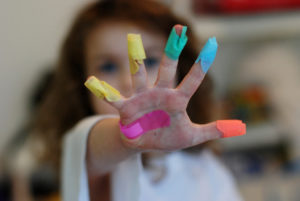
This post was originally posted on my Linked In page 5/30/16.
https://www.linkedin.com/pulse/article/never-let-em-see-you-bleed-lessons-from-alligator-part-lisa-heintz/
PART III
Will they see her bleed?
This final installment of “Lessons from an Alligator” picks up at the point where I am on the brink of a profound, life-changing epiphany involving a runaway alligator and a crowd of terrified zoo visitors. Stick with me, folks–I promise there is an important message in all of this!
I managed to salvage the situation reasonably well, though never to my own satisfaction. I learned a lesson about teaching that day that transferred far beyond Arthur and his unpredictable zoo mates. I understood that it is important to allow students to see us as learners ourselves; to see our own vulnerability, our fears, our confidence, our mistakes and our successes. We create comfortable relationships with others when we allow ourselves to be seen “scutes and all.” Strong, trusting relationships are required for learning to happen. So why the mantra “Never let ‘em see you bleed?” Isn’t that the opposite of allowing ourselves to be seen as flawed?
I think the value in the quotation is in reminding ourselves that as teachers we are not always actively teaching, but we are always modeling. For better or worse, it is not so much the errors that we make that matter, but how we handle them. Had I run crying from the Demonstration with Arthur’s tail whipping me down the path I would have instilled a clear sense of panic and fear in those who were watching the situation unfold. They would certainly have had an exciting “tail” to tell their friends, but they would also have left with a sense of fear about Arthur, alligators, and perhaps even “wild things” in general. All the knowledge we had imparted would have been for naught because it was the emotion of the situation that was embedded in their experience.
What on earth does all this have to do with using music in the classroom, you ask? Everything. Too many teachers consider themselves “poor singers” thus, they don’t make an effort to incorporate singing or music into their curriculum. They recall all too painfully being told they (or their parent, sibling, friend) “can’t carry a tune in a bucket” or asked to sing “Far, Far Away,” as the old joke goes. Those are all emotionally charged memories embedded in our minds that do not reflect reality.
The reality is this: Children love to sing! At a very young age their sense of what “sounds good” is not even truly developed yet, so they don’t realize if you sound like Kermit the Frog or Andrea Bocelli. More importantly, they don’t care! They want to be engaged in musical experiences, whether through singing, listening, creating or all three, and they need you to provide those experiences for them! In the very same way you would encourage your students’ early reading skills, building up their confidence, celebrating their mistakes (because that means they’re learning!) and their successes, they need that when it comes to music, too. And so do you!
Arthur’s real lesson is that allowing yourself to model vulnerable learning–including musical experiences–engages children in the emotion of learning, not just the information of learning. And we all know that once emotions are engaged learning becomes more fun, expedient, and memorable. But if you allow yourself to be seen “bleeding”–showing your fear by avoiding something new because it is too challenging, unfamiliar, or uncomfortable (if not singing, perhaps the dreaded essay writing or algebra, or ____ -choose your own fear) you model that avoidance of challenge is expected, okay–even acceptable. You also model that “product” (having what someone else considers a “good” singing voice or natural talent) is more important or better than the process of learning, which I suspect is the very opposite of what you really believe. And you already know what Arthur would think of that!
In closing, the following song is dedicated to all the shower-divas, car-tune karaoke artists, hum-alongers, toe-tappers and outright singers. Let your new mantra be:
“Never let ‘em see you cringe…Just sing!”

 For those of you over 40, you might recall the Sesame Street song by Joe Raposo (also covered by The Carpenters), “Sing!” Book illustrated by Tom Lichtenheld https://www.youtube.com/watch?v=vW_PU7WwCAc
For those of you over 40, you might recall the Sesame Street song by Joe Raposo (also covered by The Carpenters), “Sing!” Book illustrated by Tom Lichtenheld https://www.youtube.com/watch?v=vW_PU7WwCAc
Or for a similar message with a modern beat by the fabulous a capella group Pentatonix:
 “Sing!” https://www.youtube.com/watch?v=Yc7-krRX8uA
“Sing!” https://www.youtube.com/watch?v=Yc7-krRX8uA
Sound Off: Are there subjects, skills or activities you avoid because you are afraid or lack confidence?
If not, how do you help students gain confidence to tackle those things that seem “too hard” to them?
If so, how can you embrace your fear and turn that into a teachable moment for your students’ and your own growth?
“Never Let ’em See You Bleed” – Teaching Lessons from an Alligator– Part II
This post was originally published on my LinkedIn page 5/19/16: https://www.linkedin.com/pulse/article/never-let-em-see-you-bleed-teaching-lessons-from-alligator-heintz/
PART II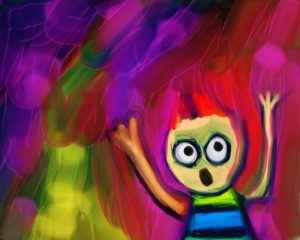
As you may recall from the previous post (5/18/16), I was last seen losing control of a baby alligator, Arthur*, during a live Field Demonstration in the Children’s Zoo.
*Not his real name.
I was horrified. First, because I was about to drop Arthur and I worried for his safety. Second, because I had no idea what caused him to strike, nor what he might do if dropped. Third, and almost more importantly, because I had turned this amazing, exciting informative experience into a horror show for this family and all the 30+ visitors who now huddled in groups at what (they thought) was a safe distance away. I was terrified of the danger for all of us. I wanted to run and get help from a staff member who surely could fix this problem, but I knew it was not safe to leave a loose alligator walking freely among people in the zoo. This was supposed to be enlightening. Educational. Fun. Not panic inducing! People were supposed to leave us having learned about the wonders of alligators, not fearful of them!
I quickly managed to get people moved further away and then stooped low enough to allow Arthur to drop safely to the ground so that I could grasp him again, as trained, and whisk him back to his shelter. Once I had Arthur firmly in my arms again I paused to take a deep breath and thank him for allowing me to renegotiate our time together. And then I had to face the sea of terrorized onlookers. In that instant, I understood the sign above the door. Thankfully, no one was literally bleeding, but damage had been done. I did not have a “script” for how to handle this moment, but I realized that I had to work some sort of magic in order to enable the crowd to still leave with a positive feeling and experience in our zoo.
Instead of darting back to the safety of the volunteer building, I spoke slowly, calmly, in a gentle voice–as much to calm myself and Arthur as the bystanders. I coaxed a smile back on my face and explained as I moved ever-so-slowly toward the outlying crowd that as “startling” as Arthur’s movement had been, it was completely natural for the alligator who sees nothing but greenery, smells the fish, hears the water running in the nearby pond and feels the warmth of a sunny day. For Arthur to get excited and want to go out and explore the world is very much like what we humans might do–in fact, what the visitors were doing at the zoo right that minute. Exploring, taking in all the sights, sounds, smells and feel of the zoo–learning about the environment! As I slowly made the rounds (keeping a good few feet between the people and Arthur), I helped them realize that natural behavior may be different from species to species, but it all serves a purpose, and, once understood, need not be feared.

Stay tuned for the epic insight in Part III!
Sound Off: If you were an onlooker in this scenario would you have run away or stuck around to see what happens next? Why?
“Never Let ‘em See You Bleed: Lessons From An Alligator”
PART I
I have always loved animals of all kinds–slimy, bumpy, long, teeny, chirpy, toothy, buggy, furry–if it is a living creature, I’m curious. That is not to say that I embrace every type of animal; my list of “acceptable” critters is limited to those I find most endearing: Cats, yes. Feral rats, no. Blue Herons, yes. Caged birds, no (I have never favored animals being contained in small spaces). Lizards, turtles, fish and Praying Mantises, yes. Ferrets, Hissing Cockroaches, and any hairless mammals, no. Hedgehogs, definitely. I am fascinated by all creatures great and small.
When I was a new teacher I decided to pair my love for “critters” and children together and volunteer at our local zoo as a Field Demonstrator, which meant I was trained to hold a variety of “safe” animals in the Children’s section of the zoo and demonstrate to visitors the many intriguing facts about the animal I was holding that day–from fish to ferrets, alligators to owls, cockroaches to snakes. I had been trained in proper handling and pertinent information to share with the public and I loved the job. I relished the time I spent talking to young children (and their adults) about the wonders of nature, the importance of each particular creature, and how to safely get a close-up view of the each one. I loved the expression on their faces as they got to touch a new animal and ask their many questions. I was helping to develop their love and respect for nature!
One thing never explained to the volunteers, however, was the daunting sign that hung over the door in the building where we received our assigned animal to demonstrate: “Never let ‘em see you bleed!” At the onset, that seemed rather foreboding and callous on the part of the zoo staff. It was as if they were suggesting that their highly trained volunteers were bound to screw up but that we would be considered unprofessional if anyone knew of our mishaps or could see the concern on our faces if an animal did not mutually respect our “handling” rules. (I learned quickly that animals do not actually read, nor are they required to sign the same waivers as their human counterparts at the zoo!) I found this proclamation worrisome, at best, and pretty off-putting.
And then one day I came to understand the sign as it was intended–not as a put-down or mockery, but as a reminder of our valuable role as volunteers at the zoo.
I was excited to take Arthur* Alligator out for a spin. He was a “baby” of about three feet in length, typically docile and well-fed before his Field Trips; always a thrill for the public to be able to see up close and even touch his bumpy scutes. It was a sunny day and we had been out “informing” (not “entertaining”) the masses for about 30 minutes. Part of my role was to teach people that wild animals are incredible and deserve to be understood–not feared. I was busily explaining how alligators are born, how they move, what they eat, and so on, when suddenly (a word which cannot be overstated in this context) Arthur decided he’d had quite enough of me babbling and people touching and ogling him. His tail, which had been residing – as trained – wrapped around my waist to provide balance and allowing me to keep his tail captured under my arm for security, FLIPPED with the strength of ten men! I found myself barely holding him with only one hand behind his jaw and the two parents and two children who had been touching him a moment ago now screaming and jumping back in terror.
*Name changed to protect the innocent.
Can I salvage the situation? Will I stay? Run? Hide? Stay tuned for Part II to find out…

Sound Off: Is fear learned, innate, both? Are all fears based on something rational at their core?
Time for An Upgrade?
Upgrading My Thinking
As part of my daily routine for generating potential visitors to Little Songbird’s site I spend about an hour scrolling through the vast array of other LinkedIn participants’ photos, names and how they choose to identify themselves. Typically there is a fairly nondescript photo followed by the person’s name and job title–and the occasional “Inspired Person Existing” or “Believer In All Good Things” types of monikers.
As the proud owner of the soon-to-launch Little Songbird: Songs for Learning (LSS4L) I am looking to connect primarily with PreK – 3 educators, homeschooling folks, librarians, college education professors, child care directors and the like. As I scan the rows and rows of possible connections my eye immediately goes not to the photo or name but to their self-selected description. I’ve found it particularly interesting to see the high numbers of people who have identified themselves as “Professional Educator” or “Professional Early Childhood Educator.” Are we not all in the profession of educating? Why do some choose to include the adjective “professional” as part of their job title? I have not noted any “Professional Plumbers” or “Professional Bloggers” or “Professional Parents” (though I’m sure there will be a few now!). What does it mean to be a professional educator?
(more…)
About our Owner, Lisa, and the Bird Sanctuary
 NOTE: I love words and languages. I tend to be thoughtful and heartfelt in my writing which can get a bit wordy (!), so if you are looking for the Reader’s Digest Condensed Version, scroll to the bottom. Otherwise, read on!
NOTE: I love words and languages. I tend to be thoughtful and heartfelt in my writing which can get a bit wordy (!), so if you are looking for the Reader’s Digest Condensed Version, scroll to the bottom. Otherwise, read on!
You and I are sitting in my son’s discarded beanbag chairs in the middle of what I call my Bird Sanctuary. On one side of us is a flock of colorful 3-D birds taking wing across the wall. The room’s only window overlooks my back yard and deck where the sun is setting. Happy birds are flittering between the bird bath and the two feeders–one for my beloved bluebirds (worms and suet nuggets) and the other for everyone else (seeds). My backyard is narrow with a steep slope at the edge of our yard; hundreds of tall trees grow up from the slope that descends to a creek, providing ample shade for our deck and plenty of “hidey holes” for the wild birds and critters who reside there. On a lucky day I can see a Blue Heron fishing in the creek.
Along the opposite wall is my CD collection of children’s music that I’ve collected over my 30 years in the field of Early Childhood Education. I estimate that I have around 500 CDs of all sorts of “children’s” recordings with more on the way! Among the other things I collect: birdie stuff, children’s books, 3-D hearts of various materials (stone, glass, etc), office supplies, quotes. So many things bring me pleasure that I am surrounded by things that make me smile.
My Sanctuary is also my office, so I spend countless hours here. I have bazillions of teacher resources, books, files, and materials from my varied classrooms over the years (PreK, primary, college, Professional Development). All my PreK -primary hands-on materials live in my basement. Actually, they allow my family and me to share the house, but they seem to be gradually taking over every nook and cranny. I’ll bet many of you can relate to that!
I have very little music training, but for a few years of piano lessons when I was young, and yet I have been passionate about incorporating some type of music into my work and life every day ever since my first day of teaching back in 1986 (also the year I married Ken!). I believe in the power of music to transform thinking, move us physically, emotionally, and cognitively through rhythm, rhyme, melody and movement. That has been at the heart of my work as an educator for 30 years, and Little Songbird: Songs for Learning has been my dream for nearly 20 of them!
I have lived in over a dozen places across the US and moved more often than that, and music has always provided a safe haven and means of connecting with people wherever I’ve been–at school, church, community, home. Even in the shower! I always joke that my shampoo is the greatest fan of my singing!
I’m NOT a singer, nor a musician. I just love singing and how it makes me–and those around me–feel! I own two pianos (don’t ask!) but I rarely play them anymore. I own a guitar which I never learned to play so I gave it to a talented friend. Your best bet at getting me to play an instrument is the KAZOO–a wonderfully funny-sounding voice-equalizer. You can’t screw up on a kazoo!
My point in divulging all this is that I believe you do not need to be a “musician” to sing with kids (or adults, for that matter!). You just need to believe in the joy and power of music and be willing to lead others in song. This site is for everyone–the “only in the shower” singers, the car-rockers, the virtuosos and everyone in between. The beauty of downloadable recorded music is that it instantly gives you Karaoke Night–the music and words are there–all you need to do is sing! In writing this blog I hope to share my thoughts on various ways to incorporate music as well as some of my thoughts regarding education in general. I welcome your feedback! I consider myself “green and growing” so I am open to other viewpoints and ideas!
If you ever drop by my Sanctuary you’ll probably find me sipping a Pepsi, listening to music (unless the work requires intense focus–then I need silence!), occasionally petting my two cats who are great supervisors, checking on my outdoor birds and feeling groovy. You probably won’t see the rare Son (in college) or exotic Husband (who works out of town most days) but their presence is felt in the Sanctuary, too–leftover work papers, the table set up behind me where our son does all his computer work when he’s home (he’s an IT guy), and birdie things they’ve given me over the years.
Welcome to my Sanctuary!
Summary: Lisa has been in education for 30 years in some form or other (PreK, Kdg, primary, college, student teacher supervisor, professional development provider, etc) and holds a M.Ed in Early Childhood Ed from the University of Cincinnati (one of the many places she’s lived). She loves birds, cats, humor, travel, children’s books, music of all sorts for kids and adults, Pepsi, her family and friends, gelato and learning. She does not like: Coke, mustard, mean people, unread books, seafood, germs or war. That said, a wee bit of all of those things tend to crop up in life, so you have to take the good with the bad…
Personal Goal: I believe that mistakes are necessary for learning. I’d like to learn from my mistakes…FASTER!
graphic courtesy of OpenClipart.org
Favorites
This post will be seen as the Favorites page in the blog.


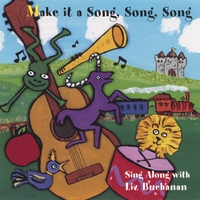
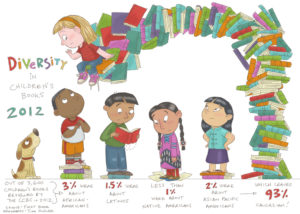
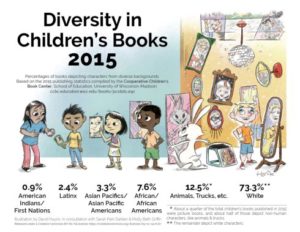
 I'm Lisa Heintz, a 30-year veteran of teaching at the pre-K, elementary, high-school and professional-development levels.
I'm Lisa Heintz, a 30-year veteran of teaching at the pre-K, elementary, high-school and professional-development levels.



